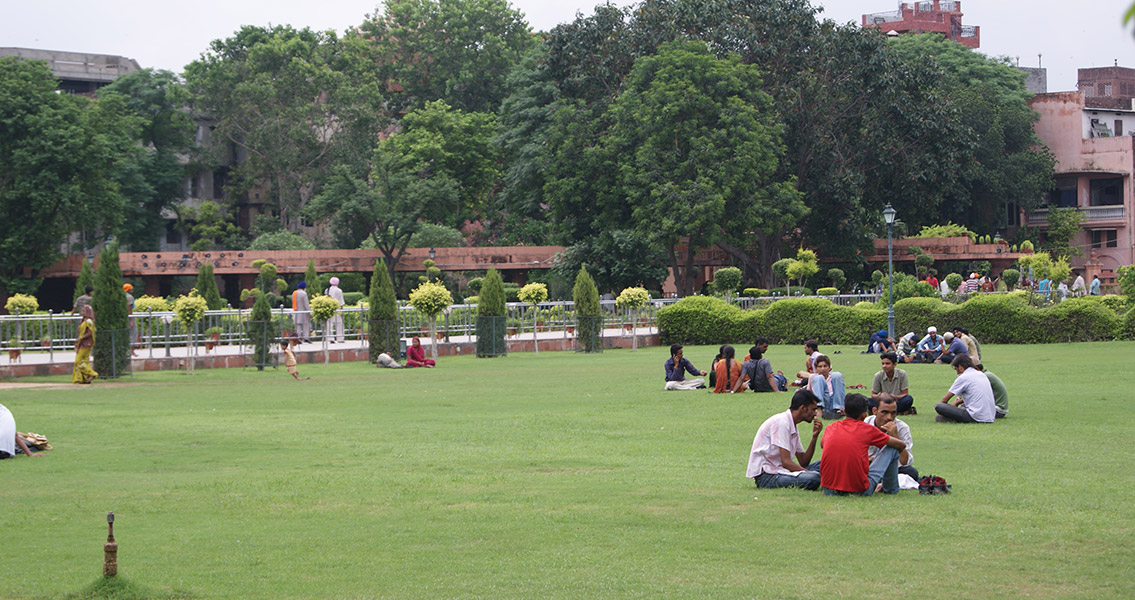<![CDATA[Soldiers of the British Indian Army fired on a crowd of unarmed Indian civilians on 13th April 1919, in the Amritsar region of Punjab. Official accounts state that over 300 civilians were killed and 1,200 injured. Other sources claim the casualty count was actually much higher. The Amritsar Massacre, as it has come to be known, was an atrocity in the history of the British occupation of India that caused a massive deterioration in Indo-British relations, in turn helping to galvanise a burgeoning independence movement. It was a crucial prelude to Mahatma Gandhi declaring his commitment to non-violent protest against the British government in India. In many ways the origins of the massacre can be found in the First World War. Over a million Indians had fought for the British Empire, with over 60,000 losing their lives in the conflict. Although British recruiters had worked tirelessly to raise the Indian Army, they never employed conscription, the soldiers had joined voluntarily. During the war, the British government enacted a host of repressive emergency legislation over India in the hope of preventing any subversive activities, and placed heavy war taxes on the Indian population to pay for the war in Europe. Such policies were inevitably unpopular, and many in India hoped that the end of the war would see these emergency measures repealed and India given greater autonomy, especially in light of the sacrifices made by Indian troops. Unfortunately, these reforms never materialised. The parliamentary Montagu-Chelmsford report recommended limited local self government in India, but it was overruled. In early 1919 the Rowlatt Acts were passed which essentially turned the emergency powers into permanent laws, among other things allowing political cases to be tried without a jury, and suspects to be held without trial. Widespread anger and discontent at the Rowlatt Acts erupted across India, particularly in the Punjab region. Gandhi called for a country wide general strike in early April, while news broke of the arrest of nationalist leaders in Amritsar, pushing the situation to breaking point. On 10th April, violent protests erupted in Amritsar in which buildings were looted and burned, foreign nationals were killed in the street, and a female Christian missionary was brutally attacked and left for dead. Brigadier General Reginald Edward Harry Dyer was sent to the area to restore order, with one of his first courses of action being to issue a ban on any public gathering. Nevertheless, on 13th April thousands of protesters gathered at the Jallianwala Bagh, a walled compound near the sacred site of the city's Sikh Golden Temple, to stage another protest at what they considered continuing British oppression. Dyer led a group of 90 soldiers from the British Indian Army into the enclosure, blocking off the only exit. Without warning the troops opened fire, witnesses saying they didn't stop until they had run out of ammunition. After laying down their deadly shower of bullets, the troops immediately withdrew, leaving the dead and wounded on the ground where they had fallen. Dyer then instigated marital law in Punjab, including public floggings and other draconian punishments, even a requirement for any Indian walking the street where the missionary had been attacked to do so on their hands and knees. Outrage at the massacre and its aftermath spread through India, ultimately culminating in the government of India calling for an investigation. In 1920 Dyer was censured for his actions and ordered to resign from the military. Opinion in Britain was divided, some, including then Secretary of War Winston Churchill, condemned Dyer's actions. Others however, claimed he had done a good job in calming disorder and maintaining British authority in India, preventing another rebellion. The House of Lords even awarded him a sword for his actions, it carried the inscription "Saviour of Punjab." Meanwhile, Gandhi begun organising his first large scale protest, one which demanded complete independence for India. The Amritsar Massacre was a turning point in the history of the country, the shockingly violent tragedy unifying Indian nationalists behind a campaign for total independence. Image courtesy of Wikimedia Commons user Jmacleantaylor]]>
The Anniversary of the Amritsar Massacre
